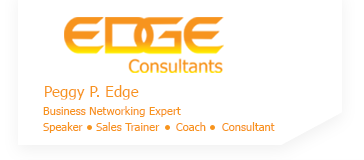Sales: Engage the Prospect First
Engage the prospect first? Absolutely!
If you lead the sales presentation by telling Mr. Prospect how wonderful your company is; that your products/services are so superior to the competition; and start trying to close without identifying his needs, you have lost any opportunity to move the sale forward. You have yet to focus on him or his needs.
What is wrong with this picture? You know the saying that when you meet someone for the first time, within 5 minutes you have made your lasting impression on the other party. Well, within those first 5 minutes, Mr. Prospect has already tuned you out because you have not made any attempt to include him in this sales process.
How do you engage, include or elicit participation from a first time prospect?
- Ask probing questions. Get him to tell you about how his company operates, what they do, and how they do that. Don’t be afraid to ask anything that you believe will help you understand their needs.
- Decipher the problems. Again, you must ask. You cannot assume anything even though you might have some prior experience in the industry, don’t get caught categorizing what you are hearing into a pat solution. Be open-minded.
- Figure out why the issues are important. You absolutely must get details here so that you understand exactly what is going on within this organization.
I learned in my senior Marketing Problems class in college, first you must identify the facts and determine the issues had hand. As professional salesmen, you must engage the client first and foremost.
Only after you have accomplished this investigative portion of your visit, then you can move forward to the next steps:
- Conceive possible solutions (figuring out what products/services will be the best fit for the application)
- Make suggestions that are client based–not what you want to sell them today (Forget that you are going to make a $100 bonus to sell the newest widget right off the production line)
- Create recommendations (if these do not match the problems, you do not have a potential solution)
- Justify each recommendation for each solution proposed. (This is a requirement…each recommendation must have a corresponding justification.)
In that marketing class, the groundwork was laid with us as potential salesmen–before you can expect to be successful in sales, you must always apply one of the Rules of Sales–Engage the Prospect!
Peggy P. Edge (c) 2014
Networking- The 30 Sec Commercial
Sometimes when you offer a service, it is difficult to explain or describe exactly what it is that you do.
For example, if you say you are a Business Coach. What exactly does that mean? What do you really do!
The Key Step here is to:
Give an example of how you have helped a client.
One of the main purposes of a good, effective 30-Second Commercial is to be able to relay in layman’s terms:
1. What it is that you do for a living?
2. Who is your target market?
3. Why should someone be interested in what you have to sell–your value proposition?
When you give that commercial, you want those in ear-shot to be able to tell other people what you do and to be able to explain it enough so there could or might be some interest generated that would result in a one-on-one meeting or introduction.
Always keep in mind to speak in layman’s terms and to give examples of how you have solved a problem.
Peggy P. Edge (c), 2014
Strategic Alliances: A Great Way to Leverage your Expertise or Product Offerings
A Strategic Alliance is a joint venture between two companies or two people in the co-relational industries.
As a small company in the industrial packaging industry, for 16 years I have used strategic alliances at Edge Packaging Systems, www.edgepackaging.com, to leverage and maximize my offerings to clients.
How I have accomplished this is to partner with companies who have expertise in areas that I have either cursory knowledge or they can provide me with a look of a much larger organization than I am thus being able to provide my clients with just about anything they need.
Some examples of how you can create a business partnership include:
Competitors – yes seek out those who have a mutual interest to help you.
Expertise: If they have a particular expertise that you lack, consider how you can use them as consultants for a project.
Product Offerings: If you have a need for your client but cannot provide from your current sources, look at the possibility to partner with a competitor.
When you partner with a competitor, obviously you must lay down some ground rules that will make it mutually beneficial to both of you.
Vendors – are a great resource for helping finance business ventures.
Financial: Many vendors will give extended terms to emerging companies to help them jump start their businesses. Sometimes it is a matter of asking for the assistance.
Utilizing the expertise of a competitor or obtaining the financial assistance from a vendor is just two great means to leverage your company and product offerings. Usually it is just a matter of asking for the help. It could be your EDGE over Your Competition!
Peggy P. Edge (c) 2014

